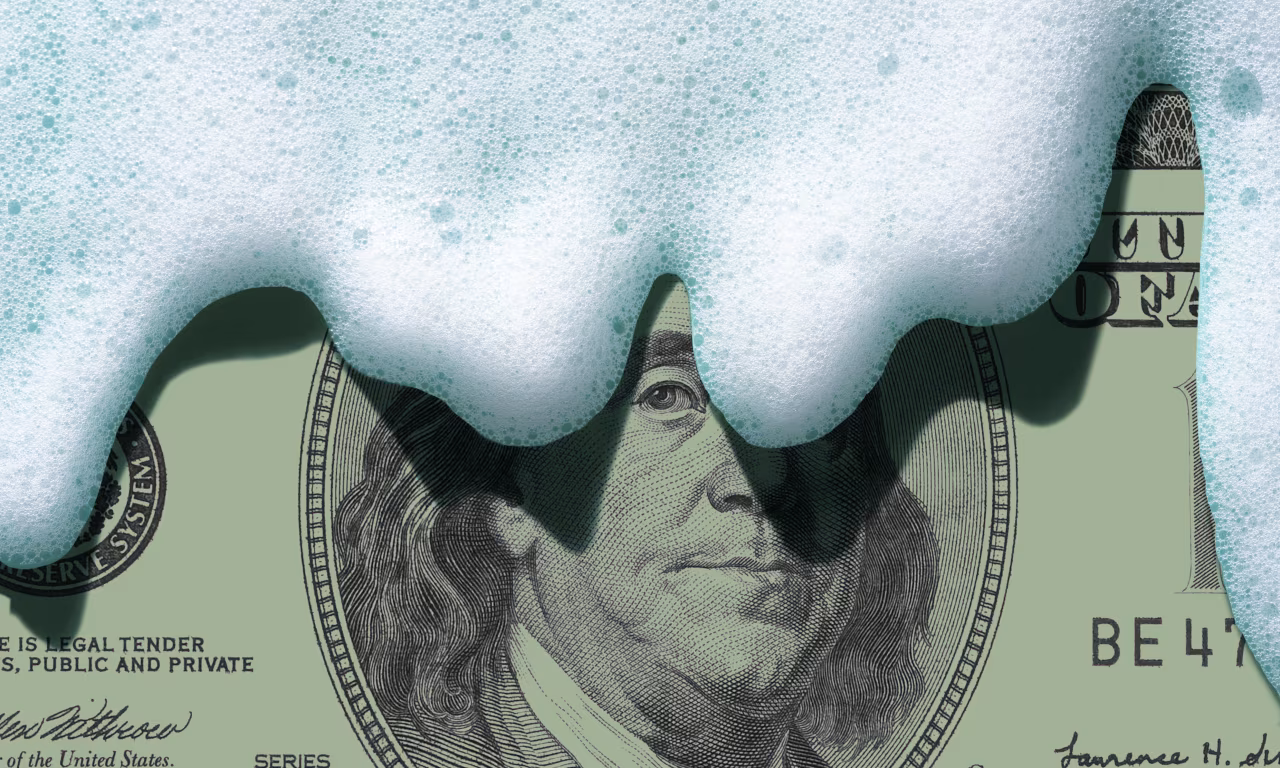
Investors are fearful that some market gains are outpacing typical measures of underlying value after strong economic growth helped power the S&P 500 to record after record in a nearly two-year bull market.
Trade wars and DeepSeek’s challenge to the AI boom have barely dented the enthusiasm. Meme stocks are back, options are on fire and bitcoin is trading around $100,000. That makes some traders nervous, because rising speculation can lead to market imbalances that at times presage sharp corrections.
“There have been signs of froth for a while,” said Seema Shah, chief global strategist at Principal Asset Management. “The market is vulnerable to disappointment.”
One source of concern: Ordinary investors are really bullish about a handful of popular companies.
Shares of Palantir Technologies, a highly popular stock among individual investors, surged 24% on Feb. 4 after the data-analytics company reported strong sales growth and robust demand for its artificial-intelligence products. Palantir’s stock has jumped roughly 58% this year and was last year’s best performer in the S&P 500.
Traders are also bidding up shares of Strategy, formerly MicroStrategy, the software company turned bitcoin-buying machine. The company’s market capitalization was recently about $87 billion, nearly twice the value of the bitcoins it holds.
Meme stocks have also jumped. Shares of GameStop, BlackBerry and online pet-products retailer Chewy have all soared more than 90% over the past 12 months, according to FactSet.
“There’s always stocks that it’s hard to understand what the market sees,” said Michael Brenner, asset allocation strategist at FBB Capital Partners. “You are starting to see some of these things stack up. And then the question just becomes, are there enough of these things to tip the market over?”
Activity is surging in options contracts, which give traders the right to buy or sell a stock at a set price. Options are a popular play among traders seeking bigger payouts than traditional buy-and-hold investing. But those bets can quickly go south, too.
About 58 million options changed hands daily on average in January, a monthly record in data going back to 1973, according to equity derivatives clearing organization OCC. That follows a record year for options trading volumes in 2024.
Zero-day-to-expiry options tied to the S&P 500 saw record trading volumes on Jan. 31, according to Cboe Global Markets. So-called 0dte options contracts, among the market’s riskiest trades, allow investors to bet on whether stocks will rise or fall by the end of the day.
Speculators are venturing beyond traditional stocks and bonds, too.
Prediction markets, where users bet on the likelihood of future events, have offered an array of contracts since some investors won big betting on President Trump’s election victory. They have listed contracts tied to everything from Federal Reserve meetings to the Los Angeles wildfires to Luigi Mangione, the suspect in the killing of healthcare executive Brian Thompson.
Americans are also embracing sports gambling on platforms such as DraftKings and FanDuel. And speculators are rushing back into cryptocurrencies, which are prone to unpredictable boom-and-bust cycles.
Bitcoin, one of the hottest trades, reached an all-time high of $109,224.74 in January, boosted by optimism that the Trump administration will usher in a golden age for crypto. It traded around $97,215.64 as of 4 p.m. ET on Friday.
Investors have piled into exchange-traded funds tied to the cryptocurrency, funneling nearly $17 billion into U.S.-listed spot bitcoin ETFs since Election Day, according to Morningstar Direct data through Wednesday.
Meme coins, or digital tokens that serve no economic purpose and whose value is based on the popularity of internet memes, have also taken off. The market value of coins launched by Trump and first lady Melania Trump, dubbed $TRUMP and $MELANIA, have peaked at about $15 billion and $2 billion, respectively, since their January debut, according to CoinMarketCap.
Meanwhile, stocks look generally expensive.
Companies in the S&P 500 recently traded at 22 times their expected earnings over the next 12 months, according to FactSet. That is above their 10-year average price/earnings ratio of 19 and within striking distance of the 26 hit in 2000 before the dot-com crash.
While stretched valuations don’t necessarily portend a selloff, they can weigh on long-term returns and make continuing growth in corporate profits more important to stock performance.
Strong earnings growth has helped support the rally this year: Companies in the S&P 500 have reported a 16.7% jump in profit so far this reporting season.
Some analysts warn that elevated interest rates could cut into those profits. Fed Chairman Jerome Powell reiterated last week that the central bank is in no rush to lower borrowing costs. Consumer prices in January rose by their highest monthly rate since August 2023, the latest in a string of warm inflation reports.
“There is a sense that the Fed is in an easing cycle,” said Roger Aliaga-Diaz, Vanguard’s global head of portfolio construction. “If that were to interrupt because inflation is starting to pick up again…that will be a little bit of a shock to the market.”


